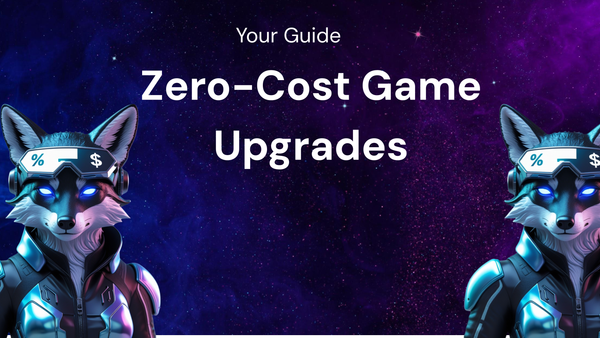Unlocking Ecommerce Trends: Insider Hacks for Industry Insight

Unlocking Ecommerce Trends: Insider Hacks for Industry Insight
The world of ecommerce is a dynamic and ever-evolving landscape. To thrive in this competitive arena, businesses need to stay ahead of the curve and understand the latest trends. This isn't just about adopting the newest shiny object; it's about strategically leveraging emerging technologies and shifts in consumer behavior to optimize operations, enhance customer experiences, and ultimately drive revenue.
This blog post delves into the insider hacks that will help you unlock ecommerce trends, gain valuable industry insights, and position your business for success. We'll explore how to leverage data, analyze competitor strategies, tap into expert networks, and cultivate a culture of continuous learning.
I. Data is King: Harvesting Insights from Your Digital Kingdom
In the digital realm, data is your most valuable asset. It's the key to understanding customer behavior, identifying emerging trends, and making informed decisions. But simply collecting data isn't enough; you need to analyze it effectively to extract meaningful insights.
A. Mastering the Art of Ecommerce Analytics:
- Google Analytics (GA4): This free tool is the cornerstone of ecommerce analytics. GA4 offers a comprehensive view of your website traffic, user behavior, and conversion rates. Dive deep into key metrics such as:
- Traffic Sources: Identify where your traffic is coming from (organic search, paid advertising, social media, referrals) to optimize your marketing spend and focus on the most effective channels.
- Bounce Rate: A high bounce rate indicates that visitors are leaving your site quickly. Analyze which pages have the highest bounce rates and identify potential issues with content, user experience, or page loading speed.
- Conversion Rate: Track the percentage of visitors who complete a desired action, such as making a purchase, signing up for a newsletter, or filling out a form. Analyze conversion rates across different segments and optimize your sales funnel.
- Customer Lifetime Value (CLTV): Predict the total revenue a customer will generate throughout their relationship with your business. This metric helps you prioritize customer retention efforts and optimize marketing spend.
- Behavior Flow: Understand the paths users take through your website. Identify bottlenecks and drop-off points in the customer journey and optimize the user experience to improve conversion rates.
- Ecommerce Platforms' Built-in Analytics: Platforms like Shopify, WooCommerce, and Magento offer their own built-in analytics dashboards. These dashboards provide valuable insights into sales performance, product popularity, and customer demographics.
- Sales by Product: Identify your best-selling and worst-selling products to optimize your product offerings and inventory management.
- Average Order Value (AOV): Track the average amount customers spend per order. Implement strategies to increase AOV, such as upselling, cross-selling, and offering free shipping for orders above a certain amount.
- Customer Segmentation: Segment your customers based on demographics, purchase history, and behavior to personalize marketing messages and offer tailored product recommendations.
- Abandoned Cart Recovery: Track abandoned carts and implement strategies to recover lost sales, such as sending reminder emails with special offers.
- Heatmaps and Session Recordings: Tools like Hotjar and Crazy Egg provide visual insights into how users interact with your website.
- Heatmaps: Visualize where users click, scroll, and hover on your website. Identify areas that are attracting attention and areas that are being overlooked.
- Session Recordings: Watch recordings of individual user sessions to understand their behavior and identify potential usability issues.
B. Extracting Actionable Insights:
- Identify Patterns and Trends: Look for patterns and trends in your data to identify opportunities for improvement. For example, if you notice that a particular product is consistently selling well on social media, you can invest more in social media marketing for that product.
- Segment Your Data: Segment your data to gain a deeper understanding of different customer groups. For example, you can segment your customers by demographics, purchase history, or behavior to personalize marketing messages and offer tailored product recommendations.
- A/B Testing: Use A/B testing to test different versions of your website, marketing campaigns, and product offerings. This will help you identify what works best and optimize your performance.
- Create Dashboards: Create dashboards to visualize your key metrics and track your progress over time. This will help you stay informed and make data-driven decisions.
II. The Competitive Landscape: Spying on the Competition (Ethically, of Course!)
Understanding your competitors is crucial for staying ahead of the game. Analyze their strategies, identify their strengths and weaknesses, and learn from their successes and failures.
A. Tools for Competitive Analysis:
- SEMrush: A comprehensive tool for analyzing competitor websites, including their organic keywords, paid advertising campaigns, and backlinks.
- SimilarWeb: Provides insights into website traffic, engagement metrics, and traffic sources.
- Ahrefs: A powerful tool for analyzing backlinks, keyword rankings, and website health.
- Social Media Monitoring Tools: Tools like Mention and Brandwatch allow you to track your competitors' social media activity, monitor their brand mentions, and analyze their audience engagement.
B. Key Areas to Analyze:
- Product Offerings: What products are your competitors selling? What are their price points? What are their unique selling propositions?
- Marketing Strategies: How are your competitors marketing their products? What channels are they using? What is their messaging?
- Customer Service: How do your competitors handle customer service inquiries? What is their return policy?
- Website Design and User Experience: How user-friendly is your competitors' website? What are their strengths and weaknesses?
- Social Media Presence: How active are your competitors on social media? What is their engagement rate? What kind of content are they posting?
- Pricing Strategy: Understand competitor pricing models. Are they offering discounts, promotions, or bundled deals? How does their pricing compare to yours?
C. Turn Competitive Intelligence into Actionable Strategy:
- Identify Opportunities: Look for gaps in the market that your competitors are not addressing.
- Differentiate Your Brand: Develop a unique brand identity that sets you apart from the competition.
- Improve Your Marketing: Learn from your competitors' successes and failures to optimize your marketing campaigns.
- Enhance Your Customer Service: Provide better customer service than your competitors.
- Adjust Your Pricing: Develop a competitive pricing strategy that attracts customers and maximizes profits.
III. Expert Insights: Tapping into the Wisdom of the Crowd
Don't try to navigate the ecommerce landscape alone. Tap into the expertise of industry leaders, consultants, and thought leaders.
A. Networking and Conferences:
- Attend Industry Conferences: Conferences like Shoptalk, NRF Retail's Big Show, and IRCE (Internet Retailer Conference & Exhibition) are great opportunities to learn from industry experts, network with peers, and discover new technologies.
- Join Online Communities: Engage in online communities like Reddit's r/ecommerce, Facebook groups for ecommerce entrepreneurs, and LinkedIn groups focused on specific ecommerce niches.
- Follow Industry Influencers: Follow influential figures in the ecommerce space on social media and subscribe to their newsletters and blogs.
B. Consulting and Mentorship:
- Hire a Consultant: Consider hiring an ecommerce consultant to provide expert advice and guidance on specific areas of your business.
- Find a Mentor: Seek out a mentor who has experience in the ecommerce industry and can provide valuable insights and support.
C. Key Areas to Focus On:
- Emerging Technologies: Stay up-to-date on the latest technologies, such as artificial intelligence (AI), augmented reality (AR), and virtual reality (VR), and explore how they can be used to enhance the customer experience.
- Changing Consumer Behavior: Understand how consumer preferences are evolving and adapt your strategies accordingly.
- Marketing Trends: Stay informed about the latest marketing trends, such as influencer marketing, personalized marketing, and video marketing.
- Payment Processing: Research emerging payment options and ensure your website supports the payment methods preferred by your target audience.
- Supply Chain and Logistics: Explore innovative supply chain and logistics solutions to optimize your operations and reduce costs.
IV. Cultivating a Culture of Continuous Learning:
The ecommerce landscape is constantly changing, so it's important to cultivate a culture of continuous learning within your organization.
A. Encourage Experimentation:
- Embrace Failure: Encourage employees to experiment with new ideas and learn from their mistakes.
- Allocate Resources for Innovation: Allocate resources specifically for research and development.
- Create a Safe Space for Innovation: Foster a culture where employees feel comfortable sharing new ideas without fear of judgment.
B. Stay Informed:
- Subscribe to Industry Publications: Subscribe to industry publications like Internet Retailer, Retail Dive, and Chain Store Age.
- Read Industry Blogs: Follow blogs written by industry experts and thought leaders.
- Attend Webinars and Online Courses: Take advantage of webinars and online courses to learn about new trends and technologies.
C. Empower Your Team:
- Provide Training: Provide your team with the training they need to stay up-to-date on the latest trends and technologies.
- Encourage Collaboration: Encourage collaboration between different departments to share knowledge and insights.
- Delegate Responsibilities: Delegate responsibilities to empower your team and foster a sense of ownership.
V. Specific Ecommerce Trends to Watch in [Year]
While the principles of data analysis, competitive intelligence, and continuous learning remain constant, the specific trends that dominate the ecommerce landscape are always evolving. Here are some key trends to watch in [Year - Update this with the current year]:
- Personalization at Scale: Moving beyond basic product recommendations to offer highly personalized experiences tailored to individual customer preferences and behaviors. This includes personalized content, offers, and even website layouts.
- AI-Powered Customer Service: Chatbots and AI-driven tools are becoming increasingly sophisticated, providing instant support, answering complex questions, and resolving issues without human intervention.
- Sustainability and Ethical Sourcing: Consumers are increasingly demanding sustainable and ethically sourced products. Ecommerce businesses need to demonstrate their commitment to environmental and social responsibility.
- The Metaverse and Immersive Shopping: Exploring opportunities within the metaverse to create immersive shopping experiences, virtual product demonstrations, and engaging brand interactions.
- Livestream Shopping: Integrating livestreaming directly into the shopping experience, allowing customers to interact with brands and purchase products in real-time.
- Voice Commerce: Optimizing for voice search and enabling customers to make purchases through voice assistants like Alexa and Google Assistant.
- Mobile-First Optimization: Ensuring a seamless and optimized mobile shopping experience, as mobile devices continue to be the primary device for online shopping.
- Subscription Commerce Evolution: Moving beyond basic subscription boxes to offer more personalized and flexible subscription options.
- The Rise of Short-Form Video: Leveraging platforms like TikTok and Instagram Reels to showcase products, create engaging content, and drive sales.
- Data Privacy and Security: Prioritizing data privacy and security to build trust with customers and comply with evolving regulations.
Conclusion:
Unlocking ecommerce trends and gaining valuable industry insights is an ongoing process that requires a combination of data analysis, competitive intelligence, expert knowledge, and a commitment to continuous learning. By implementing the insider hacks outlined in this blog post, you can position your ecommerce business for success in today's dynamic and competitive landscape. Remember to adapt these strategies to your specific niche and business goals, and constantly iterate based on your results. The future of ecommerce belongs to those who are willing to learn, adapt, and embrace innovation. Good luck!




